Tekonsha Prodigy P3 Trailer Brake Controller w/ Custom Harness - Up to 4 Axles - Proportional
with factory 4-Flat
with factory 7-Way
Will this fit?
To see if this custom-fit item will work for you please tell us what vehicle you'll use it with.
- All Info
- Reviews (6614)
- Q & A (0)
- Videos (11)
- Photos
Tekonsha Trailer Brake Controller
- Electric
- Electric over Hydraulic
- Proportional Controller
- Up to 4 Axles
- Tekonsha
- Under-Dash
- Plug-In
- Under-Dash Box
- Multiple Trailers
- LCD Display
The Tekonsha P3 is a brake controller beloved for its reliability and useability. You're able to save your settings and multiple profiles. It's easy to install, and with the custom harness, it's plug-and-play.
Features:
- Proportional - Smooth, safe, and good for your brakes long-term
- Great for a fleet - Save and customize multiple profiles
- Installs quickly - Mount the bracket to the dash, then attach the unit to the bracket
- Plug-and-play - Custom harness included
- Simple controls - Large, accessible buttons for all your settings
- Easy-to-read display includes diagnostics - Straight-forward messages get you to the root of the problem quickly
- Safe - Built-in safeguards protect vehicle, trailer, and controller
- Quick disconnect - Easy to unplug and remove the controller when you don't need it
- Automatic leveling - Must be parallel with direction of travel and horizontally level
Specs:
- Application: trailers with up to 4 axles (8 brake assemblies)
- Compatible with electric or electric-over-hydraulic trailer brakes
- Overall dimensions: 5" long x 3-1/2" wide x 1-3/8" tall
- LCD display dimensions: 1-3/16" wide x 9/16" tall
- Mounting range: 360 degrees vertically
- Warranty:
- Limited lifetime on brake controller
- Limited 1-year on wiring harness
Braking Output

Braking output is the maximum amount of power that will be applied to your trailer's brakes. How much braking output you need is determined by the weight of your trailer; a heavier trailer will need more power to bring it to a stop. You want to go as high as you can without the trailer brakes locking up.
Use the arrow buttons on the front of the module to set the output.
Power Boost for Heavy-Duty Towing
The boost setting controls the aggressiveness of your trailer's braking, meaning how quickly the brakes reach the maximum braking level. If your vehicle takes too long to come to a stop, increase the setting. If it stops too abruptly, decrease the setting.
Depending on the level of boost, your trailer brakes can start at either 13 percent or 25 percent of the set braking output. So instead of starting at 0, the brakes will start at 25 percent and get to 100 percent sooner. This keeps the trailer from pushing your tow vehicle forward.
Boost Levels:
| Approximate Gross Trailer Weight | Boost Level | Increase in Initial Power Output |
|---|---|---|
| Less than tow vehicle GVW | B1 | 13% |
| Equal to tow vehicle GVW | B1 or B2 | 13% or 25% |
| Up to 25% more than tow vehicle GVW | B2 or B3* | 25% |
| Up to 40% more than tow vehicle GVW | B3* | 25% |
*Both B2 and B3 offer a 25-percent boost in initial power. But the braking curve for B3 is more aggressive than that of B2. This means that, even though you will start out with the same intensity when using these boost levels, you will get an overall more aggressive braking experience with the higher level. So if you use B3, you will reach maximum braking sooner than if you use B2.
Manual Override
To engage the manual override, twist the rotary-style lever from right to left. This will activate the trailer's brakes and brake lights independently of your vehicle, great for stopping sway or controlling your trailer's momentum in an emergency.
Save Your Settings in Multiple Profiles
The P3 is able to store your settings in multiple profiles so that you can have them ready to go for different trailers and drivers. Even the display is super customizable: you can change the screen color, brightness, and language to make it easy to use.
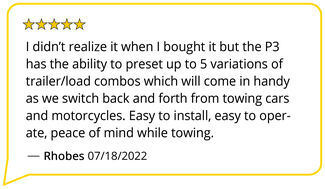
Troubleshoot with Detailed Diagnostics
The P3 makes it easy to troubleshoot problems as they come up, with comprehensible and detailed diagnostics displayed on the screen.
















Diagnostic troubleshooting messages include:
- Battery voltage
- Voltage supplied by stop light switch when brake pedal is depressed
- Output voltage to trailer brakes
- Output current to trailer brakes
Diagnostic warning signs include:
- Open ground
- Overload
- Output short
- Power loss
- No trailer connection
Safety Features
The Prodigy P3 offers advanced safety features to prevent damage to various components of your towing setup.
-Integrated reverse battery protection shields the brake controller and your trailer's breakaway system from shorts.
-When the P3 is not in use, it draws only 3.6 milliamps, minimizing drain on your vehicle's battery.
-Any time your vehicle and trailer are at a standstill with the brakes applied for more than 5 seconds, the hold feature will kick on and reduce power to just 25 percent. This will keep your trailer in place without your brakes overheating.
Installing the Tekonsha P3
Installing the P3 is incredibly simple. You'll mount the bracket to your dashboard then mount the unit to the bracket. Plug the custom harness into your vehicle and into the unit. Done!
Keep in mind that the P3 must be horizontally level and parallel with the direction of travel to work correctly.


With a replacement wiring harness (sold separately) and replacement bracket (TK5906 - sold separately), you can even transfer the Prodigy P3 to another vehicle.


Note: If you don't already have a 7-way plug at the back of your vehicle, take a look at our exclusive 7- and 4-way brake controller installation kit (ETBC7 - sold separately).
What is Proportional Braking?
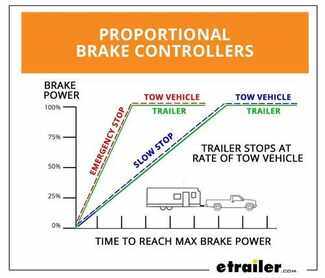
Proportional braking means that your trailer brakes mimic your tow vehicle's brakes. If you slam on the brakes, your trailer brakes will activate with the same intensity; if you brake lightly, your trailer brakes lightly too. The trailer's braking is in proportion to your vehicle and trailer.
The Prodigy P3 uses an internal inertia sensor to detect how your vehicle is braking so it can send the right amount of braking power to your trailer. It measures the inertia of your tow vehicle and activates the trailer's brakes to slow at the same rate. The result is uniform braking across your towing setup. No push-pull action - just smooth, proportional braking every time.
90195 Tekonsha Prodigy P-3 Proportional Trailer Brake Control
Replaces 39526 Hidden Hitch and 20195 Draw-Tite Intella-Stop Xtreme Proportional Brake Control
304000 Tekonsha Brake Control Wiring Adapter with 2 Plugs
Replaces 3040-P
Installation Details
California residents: click here

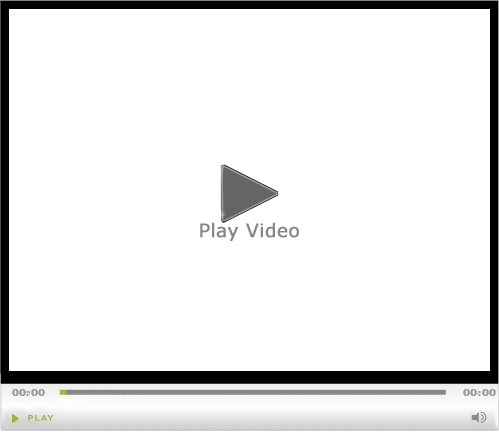
Videos are provided as a guide only. Refer to manufacturer installation instructions and specs for complete information.
Video Transcript for Install: Tekonsha Prodigy P3 Trailer Brake Controller on a 2007 Toyota Tundra
Speaker 1: Today on our 2007 Toyota Tundra, we're going to be taking a look at and showing you how to install the Tekonsha Prodigy P3 Proportional Trailer Brake Controller for one to four axles, part number 90195. To help us get that installed, we're going to be using the Tekonsha Plugin Wiring Adapter, part number 3040-P. This is what our brake controller looks like when it's installed. What this is going to be good for, it's going to allow you to apply the brakes in your trailer whilst being towed. In turn, saving the brakes in your truck so it doesn't have to stop the trailer, the trailer's going to be able to slow itself down.These arrows right here on the left side, these are going to be your gain setting. You can see it goes up to 14 and goes all the way down to zero.
Now this is going to allow you to set the maximum amount of output or amount of output that you're wanting to apply to your trailer brakes. This is going to be a proportional brake controller, which means it's going to have a sensor inside that's going to detect the deceleration of the truck and apply the appropriate amount of braking force to the trailer. For instance, if we're in an emergency situation and we had to slam on the brakes in the truck, that sensor is going to detect that, it's going to send that amount of force to the brakes in the trailer, slowing that trailer down. In turn, saving the brakes in the truck.This button here is going to be for your boost. Now, your boost setting, you're going to have three and then you're going to have an off boost.
Now, in your boost set off, that's going to be for a lighter trailer, maybe a small trailer that's unloaded. The higher the trailer weight in reference to the weight of the vehicle. For instance, if you get a trailer that is the same weight as the vehicle, you are going to probably want to be boost two. When the trailer weight goes over the weight of the truck, you're probably going to want to be set at boost three. What the boost is going to do is that's going to adjust the aggressiveness of the braking force sent to the trailer brakes.
Again, saving the truck brakes from having to slow that trailer down.This button here on the bottom, this is going to be the manual override. Now, whatever your gain is set at, it's going to go to that amount. What the manual override is for is for instance, you're going down a hill and your trailer starts to go offline a little bit or you have an emergency situation and your trailer's swaying, you can apply the brakes in your trailer without having to apply the brakes in the truck. That's going to help you get the trailer back center, back behind the truck to help you gain more control.What's going to set this brake controller apart from others is it's going to have a customizable LCD display. It's going to allow you three different languages and colors to choose from.
It's also going to have five storable settings for different size trailers or different trailers that you may be pulling. You're going to be able to select electric over hydraulic or electric trailer brakes, but what I really like about this brake controller is instead of this just giving you just a signal, this is going to actually put words on the screen. If your brake controller or your trailer is not connected or comes disconnected, it's actually going to tell you "No Trailer Connection" on it.You can change your brightness, your color, and your contrast. This is where we change our brake type, electric and hydraulic. Now, as far as this installation, it is very simple and straightforward. Now that we've gone over some of the features, let's show you how to get it installed. To begin our installation, we're going to take the white end of our adapter plug and we need to find the matching in. Now if you look right up here behind the emergency brake pedal, right above this panel, you'll see a plug. Very easy to get to. We're just going to take our white ends and plug them in together until you hear it click.Next thing we need to do is we need to mount our ground wire. Now what I like to do is try to find an existing nut that is mounting to the body, make sure it's on metal. You look right here behind the emergency brake pedal, there's a nut. You can see our ring terminal is just a little bit too small, so what we're going to do is we're going to replace that with a bigger one. This is a ring terminal for our 10 to 12 gauge wiring. We'll cut off this one. Trim this back and we'll crimp it down. Give it a little tug, make sure you've got a good connection. And we'll take 1/2" socket with a fairly long extension and get that nut off. Add our ring terminal and then replace the nut.Next, I'm going to route my adapter. What I want to do is I want to find some existing wiring up inside here that I can zip tie or secure it to. I'm going to run it across. You want to make sure it's over on this side of the steering wheel. The reason you want to stay away from this side is when you're getting in and out of the truck you take a chance of damaging it or hitting it and knocking it off. Next, I'm going to take my wire, I'm going to take some black electrical tape and I'm going to cover up my wires, just kind of help it blend in with the brake controller itself. To kind of make it look nice.Next, we're going to mount our bracket that's going to hold our brake controller onto our dash. You see our customer had something preexisting her had here, so what we're going to do is we're going to use his same holes and we're going to make sure that I'll be able to put my bracket there. It looks like we'll be able to fit it. We're going to take the screws that comes in our kit with our brake controller and fit in place. Now we can mount our brake controller to our bracket with our provided screws. Once we have it installed on our bracket, we'll plug it in. And as you can see, we have power.And the screen's red. It says, "No Trailer Connected." Once we've connected to our trailer, you'll see a little truck with a trailer behind it. Once you see that screen, you're ready to go. And that'll do it for our look at and installation on the Tekonsha Prodigy P3 Proportional Trailer Brake Controller, part number 90195 on our 2007.
Customer Satisfaction Score:
96% were satisfied with this product
4% of customers were not satisfied
- Arrived Damaged
- Product did not meet expectations
- Did not arrive in time
Ratings & Reviews
4.9
3519 reviews
See what our Experts say about this Tekonsha Trailer Brake Controller
- Can I Add Electric Brakes To A 1993 EZ Loader Boat TrailerHello Mike. It sounds like you are wanting to add electric brakes to your boat trailer that currently has no brakes. This is possible, but you will first need to make sure that your axle is equipped with a brake flange at the base of the spindle. The brake flange is necessary for adding brakes. If you do have a brake flange, you will next need to determine your bearing sizes. Electric brakes will require new hubs and drum assemblies, and we need to be sure that there is a drum available...
view full answer... - Hitch, Weight Distribution and Brake Controller Recommendations for a 2017 Toyota Sienna XLEWe can get you everything you need for towing with your 2017 Toyota Sienna XLE. By plastic shield, I believe you are referring to the appearance panel underneath the Sienna, and that will have to trimmed a bit in each of the hitches available for the vehicle. A great Class III hitch would be the Curt # C13105, which is rated for weight distribution and has been given a nearly 5-star review on our site by the over 500 customers that have rated it. As for a brake controller, the wireless...
view full answer... - Will The Curt Echo Manual Override Button C83HR Work Without The App?Hey John, good question. The app must be running in order for the separate manual override button part # C83HR to work. If your phone is not connected to the controller with the app running, the button will not do anything. I know the connectivity issues can be frustrating, but it might not necessarily be something you are doing wrong so much as the controller just being unreliable. This is by far the most common complaint we get about the Curt Echo # C51180 wireless controller. Most...
view full answer... - Difference Between Curt & Draw-Tite Trailer Hitches For 2018 Jeep Wrangler UnlimitedHi Ken, Starting with the wiring harness, I can verify for you the correct fit for the 2018 Jeep Wrangler Unlimited without a tow package is indeed the T-One Vehicle Wiring Harness with 4-Pole Flat Trailer Connector # 118786. Then for the hitches, the biggest difference between the Curt Trailer Hitch Receiver # C13392 and Draw-Tite Trailer Hitch Receiver # DT78MR is the length of the receiver. The Draw-Tite has a shorter receiver that can make it a bit more of a pain to add a ball mount...
view full answer... - Comparing the Universal Installation Kit # ETBC7 and the 7-Way RV Upgrade Kit # ETBC7LThere are a few differences between the Universal Installation Kit part # ETBC7 and the 7-Way RV Upgrade Kit part # ETBC7L. The biggest one is that part # ETBC7 comes with both the power and brake output wire you will need to run to the cab/battery whereas the part # ETBC7L only comes with the power wire you will need to run to the battery. The reason for this is because part # ETBC7L is geared more towards wireless brake controllers like the Curt Echo Mobile Trailer Brake Controller part...
view full answer... - Disc Brake Conversion Kit For 2021 Grand Design Solitude 310GKR With 7,000 lb AxlesHello Rick, thanks for reaching out. The 7,000 lb axle on your 2021 Grand Design Solitude 310GKR uses a standard bearing combination, so finding compatible disc brakes will be easy. Here is what I recommend: - DeeMaxx Disc Brake Kit - 13" Hub/Rotor - 8 on 6-1/2 - Maxx Coating - 9/16" Bolts - 7K # DE68YR - Hydrastar Electric Over Hydraulic Actuator Kit for Disc Brakes - 1,600 psi # HBA16-252-82 The disc brake kits are enough for one axle, so you will need two kits if you want brakes on...
view full answer... - Parts Needed to Add 7-Way to 2024 Hyundai Palisade LimitedThe factory wiring for both the 2023 and 2024 Hyundai Palisade has been a complicated subject. The pre-wiring you're referring to is not an actual trailer connector. You should have factory wiring and connectors which will allow you to add an OEM 7-way. I understand it says they all have this, but I would make sure you can find it on your particular vehicle if you plan to use it. There have been a lot of reports on forums where people said the connection was missing. At this time, nobody...
view full answer... - Will the Redarc Tow-Pro Liberty Controller Work with a 2023 Ford RangerHey Jacques, thanks for reaching out! The Redarc Tow-Pro Liberty # RED52VR will work just fine on your 2023 Ford Ranger, and it will install by splicing into a bundle of wires under your driver side dash. We have a video of this same process of the Prodigy P3 # 90195 on a 2021 Ranger that I'm linking for you to reference, but we don't have anything of the Liberty on a Ranger at this point in time. I'm not sure why we don't have this listed out to fit "with the tow package", but I'll send...
view full answer... - What is the Difference Between the Tekonsha Prodigy P2 and the P3 Brake ControllersActually, the P3 now has the upgraded axis accelerometer like the P2. The Tekonsha P3 Trailer Brake Controller # 90195, will work with both electric over hydraulic brakes on the trailer as well as electric brakes. It has a menu option on the display that allows the user to switch between the two systems. I have included a link to the installation details for the P3. The P2, # 90885, will also work with both electric brakes and electric over hydraulic brake systems but the mode is selected...
view full answer... - Parts Needed For Towing a Camper Behind a 2023 Toyota Tacoma Without Towing PackageSorry for the confusion on the details for the Tekonsha OEM Replacement Vehicle Wiring Harness # 22117 for your 2023 Toyota Tacoma. Since it can be used as a replacement for the OEM tapping into that connector is easier on those vehicles. Since you do not have the connector on your Tacoma you can simply use a Test Light # PTW2993 to find the correct wire on your brake switch which is on the brake pedal mount. Then you will be able to connect a controller like the Prodigy P3 # 90195. I personally...
view full answer... - No Trailer Connection on Tekonsha P3 Brake Controller 90195 on a 2000 Toyota TundraI would start by inspecting the connector on your trailer and the vehicle to make sure there is not corrosion in the connector which could be causing a bad or weak connection. If there is corrosion in the trailer side connector, you would need to replace it with 7-way Connector, part # A7WCB. For the replacement vehicle side connector, you would need Adapter 4 Pole to 7 Pole, part # 30717. For future use, I would recommend using Dielectric Grease for Electrical Connectors, part # 11755,...
view full answer... - How to Pick Out Brakes for 3,500 lb Boat Trailer with Tandem AxlesInstalling brakes on a trailer really isn't too bad. The install is pretty basic and a DIYer like yourself wouldn't have a problem at all. To determine the parts you need though we need to for sure know what axles/spindles you have so that we pick out the right parts. I attached a couple guides for that down below for you to check out. There are a lot of boat trailers that have great results with electric drum brakes so if that's a route you are interested in that's what I would recommend...
view full answer... - Parts Needed To Add Hopkins 7/4 Pole Connector To a 2020 Ford F-150 With Factory 4-WayI have a couple ways you can install the 7- and 4-Pole Trailer Connector Socket # HM40975 on your 2020 Ford F-150 with a 4-way flat factory connector. The first is going to be the easiest but is more costly. You will use the harness from the Curt 7-Way # C56413 and connect to the connector you found. The Curt harness will connect to the factory wiring as seen in the installation video I have linked near the bottom of the page. Otherwise we do have the Hard Wire Connector # 20147 which...
view full answer... - Trailer Hitch And 7-Way Wiring Package For 2019 Kia Sorento Without Factory Tow PackageHello Anton, thanks for reaching out. For your 2019 Kia Sorrento I recommend the etrailer Class 3 Hitch # e98843. This has a 2" receiver, 5,000 ls towing capacity and 750 lb tongue weight capacity. Install video and instructions are linked for you below. For your wiring, there are two kits you will need to complete everything. You will need the Tekonsha T-One Wiring Harness # 118583, as well as the Universal Installation Kit # ETBC7. These will contain everything you need to wire your...
view full answer... - Troubleshooting a Tekonsha P3 Brake Controller that Reads Trailer Not ConnectedIf you sever the blue wire leaving the P3 controller part # 90195 leaving enough room to reconnect it and test the end of the wire leaving the controller with a circuit tester like part # PTW2993 you should see voltage when you slide the manual override lever. If not, then the brake controller is bad. If you see voltage there instead then the problem is somewhere on the brake output circuit of your vehicle or trailer. Corrosion on the trailer connector typically causes this problem. If...
view full answer... - Electric Over Hydraulic Brakes Don't Work w/Brake Pedal on Newer GM Trucks w/OEM Brake ControllerLike you said, many factory integrated brake controllers will not work well with electric over hydraulic trailer braking systems. Some of the newer versions of these controllers now have an electric over hydraulic mode. Check to see if any of your trucks have this mode and, if they do, if the braking starts working with the pedal. Otherwise there are a couple of solutions to solve this issue. First, there may be an adapter that will allow the factory controllers to work but it depends...
view full answer... - Troubleshooting Only One Side of Trailer Brakes Locking UpYes, when the electric signal is sent from the Tekonsha Prodigy P3 Trailer Brake Controller # 90195 to the trailer's brakes, it should cause both sides to lock up. Since only one side is locking up, it could indicate that one brake assembly needs to be manually adjusted. I attached a video that shows how to do this process. If that doesn't get it to respond then there is possibly an issue with the wiring going into the brake assembly which you can test using a circuit tester like # PTW2993....
view full answer... - Recommended 7-Way Trailer Wiring On 2007 Ford E-350 Super Duty VanIf you don't already have a 4-way wiring harness, we need to start there to get your 7-way. For a 4-way, I recommend the Curt T-Connector Vehicle Wiring Harness with 4-Pole Flat Trailer Connector # C56020 which plugs in behind the tail lights of your 2007 E350. You will have to remove the tail light assemblies and interior trim paneling to access the factory connections. I've attached a video to help. Then you will use the Universal Installation Kit for Trailer Brake Controller - 7-Way...
view full answer... - Showing 12V Power On The Red Wire From Tekonsha Prodigy P3 PigtailIt sounds like you are hardwiring the Tekonsha Prodigy P3 Trailer Brake Controller part # 90195. The red wire should only show power at the brake controller when the brake pedal is depressed. It should be connected to the stop light wire on above the brake pedal that only shows power when the brake is depressed. If it is showing power when the brake pedal is not depressed than it is not connected to the correct wire at the brake pedal. The 12V should be showing on the black wire which...
view full answer... - Does Prodigy P3 Brake Controller Eventually Shut Itself Off With No ActivityAfter 10 minutes of inactivity the Prodigy P3 part # 90195 will go into sleep mode which means it basically shuts itself off without losing presets.
view full answer... - Stealth Hitch And Towing Kit For 2024 Volvo XC90Hello Geoff, thanks for reaching out. We do offer a stealth hitch and wiring package for the 2024 Volvo XC90. For that, I recommend the following: - Stealth Hitches Hidden Trailer Hitch Receiver w/ Towing Kit - Custom Fit - 2" # SH27FRT This comes with everything you need to pull a trailer. You get the stealth hitch and rack receiver, plus the towing kit with active harness. The hitch has a max towing capacity of 6,000 lbs so this will be plenty strong for a 2,500 lb enclosed trailer....
view full answer... - Timbren Axle-Less Trailer Suspension System Rated for Higher Than 2,000 PoundsThe Timbren Axle-Less Trailer Suspension System, part # A20RS545, is rated for a total of 2,000 pounds. Essentially, it's designed to work in place of a suspension system and a 2,000 pound standard axle. If you need a 3,500 pound system use part # A35RS545 that has idler hubs with the same 5 on 4-1/2 bolt pattern. If you want to add brakes instead use part # A35RS545E that includes the hub and drums, as well as the brake assemblies. There really isn't anything to retrofit. You just...
view full answer... - Parts Needed to Add Disc Brakes to Trailer with Dexter 12K Axles w/ Electric Drum BrakesThe Kodiak # K2R1258L12 Disc Brake Kit is compatible with a 12K Dexter axle with a 7-bolt brake mounting flange. Your current wheels/hubs should have an 8 on 6-1/2 inch bolt pattern. You'll also need an electric over hydraulic brake actuator, a brake line kit, a break away system and a brake controller that's compatible with electric over hydraulic brake systems. For the electric over hydraulic actuator, I'd recommend going with the Hydrastar # HBA16. Our install techs have found it to...
view full answer... - How to Convert a Trailer with Surge Brakes to Electric Over Hydraulic BrakesYou can convert surge brakes to an electric over hydraulic braking system. To do this, you will need an electric over hydraulic actuator and a brake controller. For an electric over hydraulic actuator, I recommend looking at the Carlisle HydraStar units. If your trailer has drum brakes, you will want part # HBA-10. If your trailer has disc brakes, then you will want part # HBA16. I have also attached a link to all of our electric over hydraulic actuators for you to check out your options. The...
view full answer... - Troubleshooting Hopkins Impulse Trailer Brake Controller Error Message OEThe troubleshooting guide for the Hopkins Impulse trailer brake controller does not list an error code "OE" but if the unit displays a flashing code "SC" this indicates a short on the brake output circuit or a defective brake magnet, which is unlikely on a new Aliner. Those error codes can sometimes be difficult to read. My Hopkins contact said much older versions has error codes E1, E2, E3 but not OE. I suggest taking a close look at your Tacoma's trailer connector. Corrosion issues on...
view full answer... - Brake Controller Installation in 2015 Toyota TacomaThe # 3040-P is indeed the correct brake control wiring adapter for your 2015 Tacoma. Due to the presence of the knee airbag, the preferred location to the right of the steering column might not be feasible. If there's not a suitable location to the right of the steering column where the controller could be mounted so that it's parallel to the direction of travel, you'll need to consider an alternate spot. If you watch one of the videos I've linked you to, you can see the controller being...
view full answer... - Suspension Enhancement Recommendation for 2008 Toyota Sequoia Towing TrailerThe Timbren kit part # TTORSEQ1 that you referenced is the correct fit for your 2008 Toyota Sequoia and would give you additional suspension support when towing. That said I wouldn't necessarily recommend this kit unless you were planning to be towing most of the time as it would make the ride quality a bit harsher when not towing. The better option if you are concerned about ride quality is the part # F4164 which allows you to use varying air pressure in the bag so that you can tailor...
view full answer... - Location Of Brake Controller Connector In 2003 Toyota Land CruiserIf your Land Cruiser was equipped with the factory installed 7-way trailer connector at the rear bumper, it will have the brake controller connector located under the dashboard. The connector will be taped to another wiring harness somewhere near the top of the emergency brake pedal. The connector will likely be covered with tape, so it could be difficult to locate. If you find a big ball of tape wrapped around a wiring harness, you've probably found it. The # 3040-P you've referenced is...
view full answer... - Brake Controller Install Harness Location for Prodigy P2 in a 2015 Toyota TacomaTo install the Prodigy P2 part # 90885 in your 2015 Toyota Tacoma the install harness part # 3040-P is the correct one to use. The plug in a Tacoma is extremely well hidden. It is high above the driver's side kick panel taped behind a plug wrapped in foam. I have attached a photo to help you locate it in a late model Tacoma. It's the white connector.
view full answer... - Install Harness for Redarc Tow Pro in 2006 Toyota 4Runner with Factory WiringTo install a Tow Pro Elite Brake Controller like part # RED44FR in your 2006 Toyota 4Runner the correct custom install wiring kit is the part # 3040-P with the adapter # 331-TPH-017 which plugs into the port under the dash of your vehicle and the other end will plug directly into your controller.
view full answer... - Blue Wire Showing Voltage with No Trailer Connected and When Not Applying Brakes on Brake ControllerIt does sound like there is a short to the brake controller through the wiring or in the internal circuitry of the brake controller. Since your brake controller shows no red light this indicates a short to the brake line (blue wire). If you are using wiring harness, # 3040-P, make sure that extra white ground wire is attached to a clean bare metal surface. If it is hardwired to the truck, the ground needs to be connected to the negative battery terminal. Sever the blue wire a few inches...
view full answer... - Recommended Brake Controller for 2007 Toyota 4Runner with Weight Distribution System Sway ControlFor your 2007 Toyota 4Runner, the Prodigy P3 # 90195 is what I recommend for your brake controller. If you have the factory 7-way, then you will simply use wiring harness # 3040-P and you'll be ready to go. If you don't have the factory 7-way then you will need to hardwire the controller using # 5506 if you have a 7-way or # ETBC7 if you need to add a 7-way. I've attached a couple videos to assist.
view full answer... - Brake Controller Install Port Location on a 2013 Toyota TundraCheck out the install video I attached that shows how to use the install harness # 3040-P on a very similar 2013 Toyota Tundra as yours. It will be right by the emergency brake pedal under the dash. I attached a picture that shows it as well.
view full answer... - Brake Controller Installation on 2006 Toyota Tacoma w/ 7-Way Trailer ConnectorToyota didn't offer a factory 7-way option for the 2006 Tacoma, so your 7-way was either aftermarket or dealer-installed. I'm assuming that your 7-way is already tapped into the lighting circuits. Look under the dash for a coiled up blue wire, if you find one, it's most likely the brake output circuit connected to the pin in the 5:00 position on your 7-way. You'd need to hardwire the controller, using a kit like our # 5506. If you use a Tekonsha brake controller like the Prodigy P2,...
view full answer... - Location of Factory Trailer Brake Controller Harness on a 2007 Toyota Tacoma with Tow PackageThe factory harness to plug in a brake controller wiring harness on your 2007 Toyota Tacoma is located underneath and left of the steering column, taped to another harness near the emergency brake pedal. There will be a 5-pin connector that mates with the one on the adapter, # 3040-P. The harness does include an additional ground (white) wire that will need to be attached to a bare metal surface. The P2 is a proportional controller that applies the trailer brakes in proportion to how much...
view full answer... - Difference Between Prodigy P2 and Redarc Tow Pro Liberty Brake Controller 2011 Toyota SequoiaThe braking is going to be about the exact same between the Prodigy P2 part # 90885 and the Redarc Tow Pro Liberty part # RED52VR. The main difference will be that the Redarc only puts a small know on your dash and the P2 is a traditional brake controller that is much bigger. To install either controller you'd need the install harness part # 3040-P. For how much cleaner of an install the Redarc provides that would be the route I would go with. For tow mirrors the K-Source set part # KS81300...
view full answer... - Brake Controller Installation on 2011 Toyota TundraIf your 2011 Tundra has the factory tow package, which includes the factory installed 7-way trailer connector on the rear bumper, it will be equipped with the tow package plug under the dash, as shown in the photo I've edited for you. Some models with the factory 4-pole (or 4-pin) trailer connector will also have the plug under the dash, you'll need to look for a white plug located above and to the left of the emergency brake pedal, above the toe kick. Occasionally, the plug will be located...
view full answer... - Where to Connect Brake Controller Adapter in on a 2014 Toyota Tacoma with Factory 7-WayIf your 2014 Toyota Tacoma came with the Factory 7-Way then you will want to look next to the driver side kick panel for the wiring harness. I have attached a video of the Tekonsha P2 # 90885 being installed on a 2012 Tacoma that you can reference. This installation video shows the Plug-In Wiring Adapter # 3040-P being installed for the P2 which will be the same as Curt Adapter # C51362 for your Curt brake controller. If your connector is not located there then let me know and I can...
view full answer... - Parts Needed to Install P3 Brake Controller in 2017 Toyota HighlanderIf you have a factory 7-way on your 2017 Toyota Highlander you'd have to hardwire the controller to the vehicle as there isn't a factory port, but if you didn't have a factory 7-way we offer a solution that fits your vehicle and comes with a plug that attaches directly to the back of your P3 part # 90195 with the 7-Way kit part # 22119. For a wiring kit to install the brake controller to a factory 7-way you would want the Wiring Kit for 2 and 4 Brake Electric Brake Controllers # 5506....
view full answer... - Recommended Trailer Brake Controller and Wiring Needed for 2000 Toyota 4RunnerFor your 2000 Toyota 4Runner, I recommend the Tekonsha Voyager Trailer Brake Controller - 1 to 4 Axles - Proportional # 39510 with the Brake Control Plug-In Harness # 20127. This is the best controller under the price point you are seeking. Then for your wiring, if you already have a 7-way connector you can use the kit # 5506. If you have a 4-way then you will use the # ETBC7 kit which comes with the 7-way adapter and wiring. If you don't have a 4-way, then you will need that first and...
view full answer... - What Parts are Need to Install a 7-Way on a 2007 Toyota TundraIf your truck came with a factory 4-Way connector, you will need to use part # ETBC7 to add a 7-Way at the rear of the truck. You will plug the lead off the 7-Way into your pre-existing 4-Pole. You will then have to hardwire the other 4 loose leads. White is grounded to truck frame, black is ran to the battery with the included 40amp breaker wired in line. Blue is run up to the cab on the truck and is connected to the blue wire on your brake controller. The purple wire is for reverse lights....
view full answer... - What Else is Needed to Install a Tekonsha Brake Controller # 39510 on a 2003 Toyota 4RunnerWith this Tekonsha Voyager Proportional Brake Controller # 39510 you will also need harness # 3040-P, to make it functional on your 2003 Toyota 4-Runner. You will simply plug the included adapter into the back of the brake controller and then plug the other end into the port underneath the dash and you will be good to go.
view full answer... - Equalizer or Blue Ox Weight Distribution for 7,500 lb TrailerBetween Equalizer and Blue Ox I would go with the Equalizer hands down. Equalizer systems are among the nicest systems you can use. The Blue Ox systems work decently but in terms of sway reduction, ease of install, and reliability the Equalizer is the way to go. You would want the part # EQ37120ET which would work great on your trailer that weighs 7,500 lbs. It comes with a hitch ball but you would need the thin walled socket part # ALL643216 to install it.
view full answer... - Will LED Light on TK63VR Tekonsha BRAKE-EVN Drain Vehicle Battery?Brake controllers like your Tekonsha # TK63VR are wired so that they have a direct connection to the vehicle battery. This is done as a safety measure, so the user doesn't accidently forget to turn on the brake controller when towing. After a between 10 and 20 minutes of inactivity, a brake controller will go into a sleep mode, where they are just about completely powered down. At this point the amount of power they draw is so tiny that you'd need to leave the vehicle unattended for a...
view full answer... - Recommended Tekonsha Brake Controller Adapter for a 2009 Toyota Tundra w/ the Factory Tow PackageHey Scott. Since your 2009 Toyota Tundra has the factory tow package, you can use the Tekonsha Plug-In Wiring Adapter for Electric Brake Controllers item # 3040-P to install the Voyager iD Brake Controller item # TK26BR. The white factory plug you're looking for will be located above and to the left of the emergency brake pedal, above the toe kick. I've attached a picture below to help you find it. If your truck did not come from the factory with a 7-way connector you will not have this...
view full answer... - Location Of Brake Controller Port On 2015 Toyota TundraOn your 2015 Tundra, the vehicle side connector is located behind an access panel located in the center of the dash, just to the right of the steering column. You can check out the attached photo that shows where this panel is located. Using a trim panel puller, carefully pry the panel out and undo the locking tabs to remove the panel. You will find the mating connector behind this portion of your dashboard. I have attached a photo that shows what the connector will look like. If you...
view full answer... - How to Install a Brake Controller in a 2015 Toyota TacomaIf your 2015 Toyota Tacoma has a factory 7-way the correct install harness would be the part # 3040-P. This adapter plugs into the 5-pin connector on your vehicle's built-in brake control wiring harness. The harness is located underneath the dash, to the left of the steering column, taped to another harness near the emergency brake pedal. See install video I linked. If you do not have a trailer connector at the rear of your vehicle you would need to go a different route. You will need...
view full answer... - Redarc Liberty Install on 2014 Toyota Tundra With Factory 7-WayAssuming that your 2014 Toyota Tundra has the factory 7-way trailer connector, in addition to the # RED24FR Redarc Tow-Pro Liberty, you'll also need the # 331-TPH-017 pigtail and the # 3040-P wiring adapter. The adapter and the pigtail would plug in together with the open end of the # 331-TPH-017 going to the Redarc controller, and the open end of the # 3040-P plugging in to the factory trailer brake controller port of your vehicle. You might also be interested in the # 331-TPSI-002 mounting...
view full answer... - Will Adapter 4-Pole to 7-Pole and 4-Pole Connect To Brake Output Circuit on 2013 Toyota TundraHi Dana; does your 2013 Toyota Tundra have the brake controller port under the dash? If it does, you can use the # TK77ER along with the # 37185. There will be factory wiring, including the brake output wire, you can splice the # 37185 into at the rear. If you do not have the brake controller port or the factory wiring to splice into you need the # ETBC7 to upgrade to a 7-way, along with the # 90195 with the universal wiring harness. If you have any other questions feel free to reply below.
view full answer... - Looking For Longer Wire Harness For Tekonsha Prodigy P3 Brake ControllerHello Rick, we sure do. For a longer harness for the Tekonsha P3 Controller you can use the following: - Pigtail Wiring Harness for Tekonsha and Draw-Tite Brake Controllers - 34" Long # 7894 Or if you have some extra wire laying around you could use a length of wire and a few heat shrink butt connectors and make your own extended harness.
view full answer...
Do you have a question about this Trailer Brake Controller?
Info for this part was:






At etrailer.com we provide the best information available about the products we sell. We take the quality of our information seriously so that you can get the right part the first time. Let us know if anything is missing or if you have any questions.








































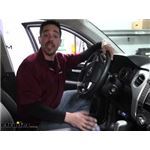
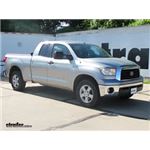


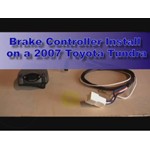
































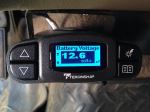



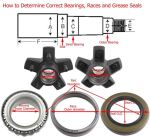

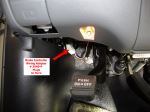

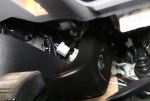
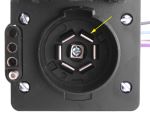
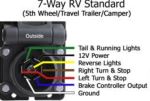
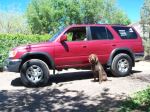



Thank you! Your comment has been submitted successfully. You should be able to view your question/comment here within a few days.
Error submitting comment. Please try again momentarily.